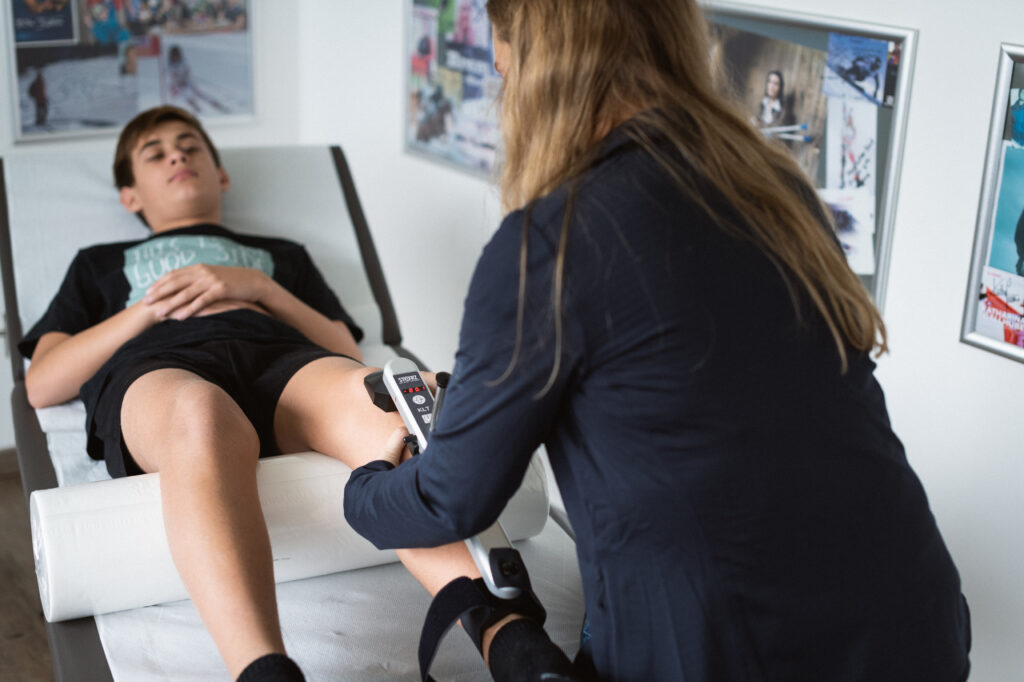Strain-related problems during childhood and adolescence
Probably the most well-known strain-related pain affecting children’s knee joints is Osgood–Schlatter disease (OSD), i.e. inflammation of the patellar ligament at the tibial tuberosity (where the patellar tendon attaches to the tibia). What causes the pain? Wherever large tendons attach to a bone (e.g. the patellar tendon, Achilles tendon, rectus tendon), ossification centres form at the tendon attachments as a child’s skeleton becomes increasingly ossified. These ossification centres are connected to the rest of the bone by a layer of cartilage (growth plate) until the bones are finished growing. As a result of strong bone growth in combination with high training intensity, these processes can become overstrained.
This manifests itself as a loosening of this joint gap and, as a consequence, increased cartilage and bone formation. This type of anterior knee pain should not be confused with osteochondrosis dissecans. To rule out more serious consequences of overstraining, an MRI scan should be performed. When it comes to prolonged or repeated episodes of overstraining, the tendon attachments also become visible on x-rays or even externally due to increased bone accretion. Especially if the load intensity is not reduced, at least in the short term, this painful situation can persist for long periods of time. In principle, this problem has a self-limiting timetable, i.e. it will stop once the ossification of the axial skeleton is complete at the latest. Nevertheless, the ability to train can be greatly hampered due to pain. Continuing to exert pain-inducing strain on the joint increases the risk of other joint injuries, as muscle tone may be greatly reduced for a short time due to pain inhibition.
